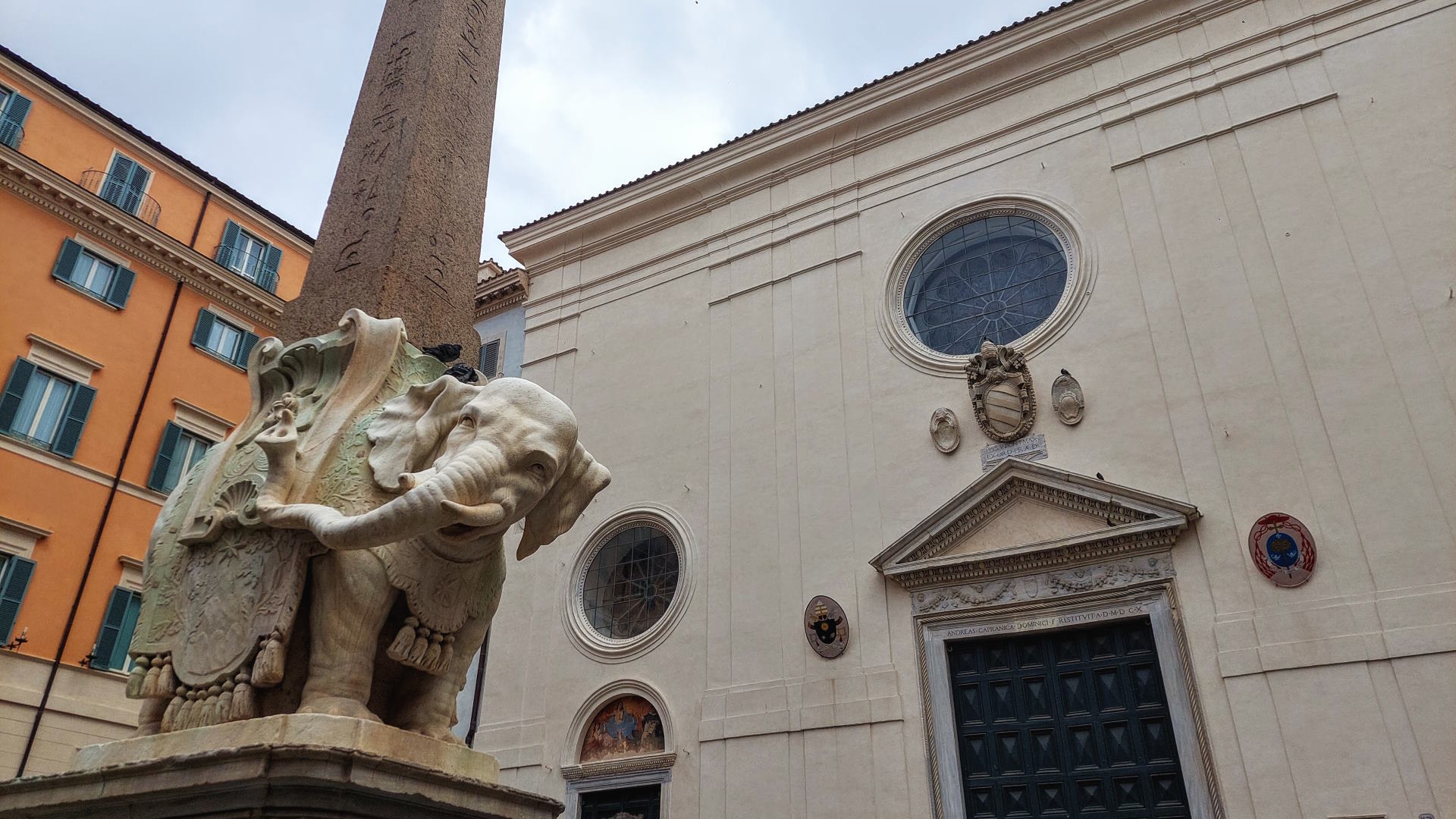
In addition to its monuments, palaces and churches, a city is also made up of the memories it evokes and the life that passes through it. A daily life that, in Rome, has always been marked by rites, holidays, anniversaries, celebrations: a full program of fixed events which, with their load of traditions, represented a (religious or civil) occasion for reflecting, meeting, sharing and having fun, season after season.
If some of them have not resisted the oblivion of time or have lost part of that sense of perfect wonder that they used to give to the Romans and to the many visitors of the city, others are still alive and kicking, even richer today than in the past. And some others, even if born in more recent years, are already part of the modern and contemporary “traditions” of the city.
To fully experience Rome and immerse yourself in its history, month by month we will present you some of the special days and moments of the city, the past and present one – the most heartfelt or awaited events, or even simply the most curious ones.
-
The Navigium Isidis, the vessel of Isis, 5 march
-
Saint Frances of Rome, 9 March
-
The miracle of St. Philip Neri, 16 March
-
St. Joseph and the cream puffs, 19 March
-
The Fosse Ardeatine Massacre, 24 March
-
The Annunciation and the “procession of spinsters”, 25 March
The Navigium Isidis, the vessel of Isis, 5 march
A crossroads of peoples and cultures, Rome always willingly tolerated new gods and cults – provided, of course, that they did not claim exclusivity and knew their place. For long centuries, high on the top ten list of imported foreign deities was Isis, the Egyptian great mother goddess, who arrived in Rome as early as the 1st century BC, after the conquest of Egypt, and was only fleetingly opposed by Augustus and Tiberius. Her most sumptuous temple, the Iseum Campense, was in the heart of the Campus Martius, just behind the Pantheon, and traces of it can still be seen here and there, among obelisks (Macuteo, Minerveo...) and fragments of statues, such as the Piè di Marmo and the bust of Madama Lucrezia. In the vast confines of the Roman Empire, the cult of Isis persisted well beyond the 4th century, as did the festive and colorful celebration that re-enacted the story of the goddess, who had resurrected her husband Osiris after finding his dismembered body parts in the sea. Preceded by a parade of masked groups, dressed as soldiers, magistrates, gladiators and philosophers, in Rome the statue of the goddess was carried in procession to the port of Ostia, accompanied by women dressed in white. Here the faithful filled a ritual boat with gifts and votive offerings and let it sail out to sea until it disappeared over the horizon, as a prayer for the safety of seafarers, and all her worshippers in the sea of life. The date on which the Navigium Isidis was held marked the reopening of the navigation season, which had been interrupted during the winter months. Some scholars argue that it is from the dancing, masked procession of Isis and the carrus navalis (a naval wagon on which the statue of the goddess would have been mounted) that the Christian tradition of carnival derives.
Saint Frances of Rome, 9 March
She is the most Roman of all saints: Francesca Bussa de’ Leoni (Ceccolella) was born a few steps from Piazza Navona to a rich and noble family in the late 14th century. Forced very young into marriage to the equally wealthy and noble Lorenzo de’ Ponziani, she transformed her husband’s house in Trastevere together with her sister-in-law Vannozza into a point of reference for the sick and the poor in a Rome wounded by infighting, famine and pestilence. Despite marriage and motherhood, in 1425 with other young women she made a vow of oblation before the Olivetan Benedictine fathers of the monastery of Santa Maria Nova, in the church that would later be popularly named after her and where she still rests today. In 1436, upon the death of her husband, she joined her sisters in the monastery of Tor de’ Specchi, at the foot of the Capitol Hill and next to the Theater of Marcellus, becoming its superior. An expert in healing with herbs and decoctions as well as a skilled midwife, Frances died four years later, on 9 March: the whole city flocked to venerate her body and Rome immediately considered her a saint, although the process of canonization would have to wait until 1608. Her life and miracles are recounted in the 15th-century frescoes of the Oblate Monastery, which opens its doors to the public on 9 March each year, when nuns celebrate the ancient rite of blessing ointment and webbing for women in childbirth. Because of the guardian angel that the saint saw walking beside her she was chosen as the patron saint of motorists, the object of a special blessing since the 1920s. Even today, in the square in front of the Colosseum, a number of police and emergency vehicles are blessed in the presence of city authorities, along with a limited number of cabs and private cars.
The miracle of St. Philip Neri, 16 March
The son of a Florentine notary, Philip arrived in an only apparently opulent Rome when he was not yet 20 years old: for the next 60 years he would be a tireless animator of charity and evangelization, going down in history as the city’s “second Apostle”. In the convent adjoining the church of San Girolamo della Carità, where Philip moved in 1551 after being ordained at San Tommaso in Parione, he began to gather around him a group of young people: this was to become the first nucleus of the Congregation of the Oratory, to which Pope Gregory XIII would grant the church of Santa Maria in Vallicella in 1575. Among the many places where “Pippo bbono” (the good Philip), the “saint of joy” or “God’s jester”, left his traces, however, is also Palazzo Massimo alle Colonne, the place of the miraculous, brief resurrection of Prince Fabrizio Massimo’s teenage son, consumed by a long illness. Busy saying Mass, Philip had not been in time to assist young Paolo in the last moments of his life. Arriving at his bedside, however, he embraced him and sprinkled him with holy water, calling him by name. At that point the young man reportedly reopened his eyes and, after asking for confession, said he was happy to be reunited in heaven with his mother and sister Elena, who had died a few days earlier. With the saint’s blessing, Paolo would then die again. This happened on 16 March 1583: the room where the miracle took place was transformed into a chapel that holds two relics of Philip, his spectacles and his rosary. Every year, on the morning of 16 March, the palace opens its doors to those who wish to attend mass in the miracle chapel and pay homage to one of the city’s most beloved saints.
St. Joseph and the cream puffs, 19 March
Putative father of Jesus, patron saint of the weakest and carpenters, a “just man” according to the Gospels, St. Joseph is one of those saints who arouses an instinctive sympathy. The Church celebrates him twice a year, on 1 May as the patron saint of workers and precisely on 19 March, alongside Father’s Day in Catholic countries. The choice of the latter date, i.e. the eve of the spring equinox, was possibly influenced by popular and plebeian cults related to the regeneration of the Earth: ancient Romans celebrated on these days the Liberalia in honor of Liber pater and Libera, two Italic deities guarantors of fertility, and buns kneaded with honey were offered and sold in the streets of the city. The “sweet” component was inherited by the feast of the saint, which was to become one of the most anticipated events in Papal Rome. The feast was financed by the Confraternity of Carpenters, who had begun construction of a large new church above the Mamertine Prison, in the Roman Forum, in the late 16th century. Processions and solemn masses were held on 19 March in the church of San Giuseppe dei Falegnami: the pious recollection was, however, surrounded by equally solemn meals of fritters and cream puffs, fried in giant frying pans amid music, dancing and stornelli songs. A widespread legend claimed, moreover, that during his exile in Egypt the saint was forced to improvise himself as a traveling pastry chef, as a “frittellaro”, a fritter maker, as he is friendly nicknamed in Rome. From the 1920s, celebrations moved to the Trionfale district, around the new minor basilica of San Giuseppe which is close to Saint Peter’s Basilica, where even today, though in a markedly lesser tone than in the past, the saint continues to be honored and celebrated eating cream puffs.
The Fosse Ardeatine Massacre, 24 March
“The order has been carried out”: these are the last words of the meager and bureaucratic communication issued by the German command to announce the terrible reprisal ordered in response to a partisan act, the shooting of ten “communist criminals” for every German killed. It had all begun a few hours earlier, in the late afternoon of 23 March, when a bomb exploded on Via Rasella, behind Piazza Barberini, killing 32 German soldiers and triggering an immediate and angry reaction from the occupying forces of the Third Reich. The entire neighborhood was immediately put to the sword and a blind manhunt rounded up a number of civilians, then lined up in front of the Palazzo Barberini. Jews, political prisoners and ordinary inmates were then taken from the Via Tasso and Regina Coeli prisons: on 24 March, at about 2 p.m., the 335 prisoners were loaded onto vans with their hands tied behind their backs and transported to a location just outside the town: the abandoned caves near the Via Ardeatina that were chosen as the execution site later became infamously known as the Fosse Ardeatine. A few days later, the vaults of the tunnel were bombed to obstruct access to the caves and conceal the bodies of the victims: it was then necessary to wait for the liberation to begin the difficult and painful work of recovering the bodies and identifying them. Now the dead rest in a neat national shrine-monument, where every year on 24 March Romans, the President of the Republic and the highest authorities of the state pay tribute to the fallen and keep alive the memory of one of the greatest Nazi-Fascist massacres in Italy.
The Annunciation and the “procession of spinsters”, 25 March
In Rome, scenes depicting the Annunciation are already present as early as the 3rd century, in the catacombs of Priscilla, for example, where the enthroned Virgin is next to a messenger wrapped in a tunic. Entirely dedicated to the divine motherhood of Mary, dressed as a Byzantine princess, are then the 5th-century mosaics of the triumphal arch of St. Mary Major, and this Basilica was the focus of the great procession prescribed for the religious solemnity, introduced into the Roman liturgical calendar at the end of the 7th century and set for 25 March, nine months before Christmas. The main event of the feast day, however, was for a long time a singular and pompous ceremony attended by the Pope and held in the church of Santa Maria sopra Minerva, in the Rione Pigna: the “procession of the spinsters”. The rite had been instituted in the mid-15th century by the Archconfraternity of the Santissima Annunziata, with the noble purpose of helping young women that were “honest and good-natured” but lacking means to marry or enter a convent, keeping them on the straight and narrow path. Dressed in white and entirely covered by a veil that barely allowed a glimpse of their eyes, the maidens entered the church with a candle in their hands and kneeled before the pontiff for the ritual kissing of the “sacred slipper”, receiving a white silk bag with the dowry in coins. The ceremony was suspended in 1870, with the Unification of Italy, but to go back in time we can stop and admire the magnificent Annunciation painted by Antoniazzo Romano for the church: as the archangel Gabriel announces her future motherhood, the Virgin Mary is intent on handing a white sack to three young women accompanied by Cardinal Juan de Torquemada, uncle of the famous inquisitor and founder of the Archconfraternity.
April in Rome. Key dates and events (today as in the past)
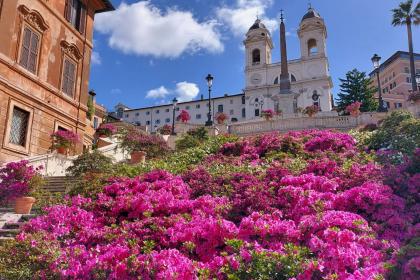
May in Rome. Key dates and events (today as in the past)

The Egyptian culture in Rome
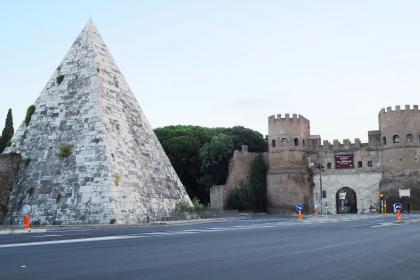
 Condividi
Condividi
Santa Francesca Romana al Palatino (Santa Maria Nova)
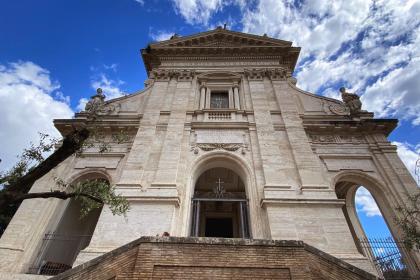
 Condividi
Condividi
Rome's obelisks
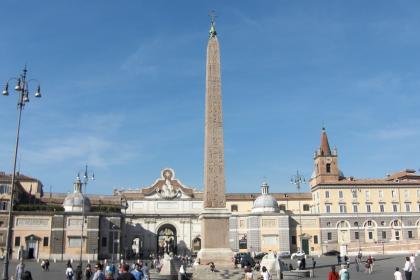
Monastery of Oblates of St. Frances of Rome
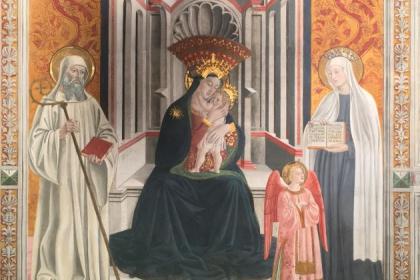
 Condividi
Condividi
Ospitale di Santa Francesca Romana
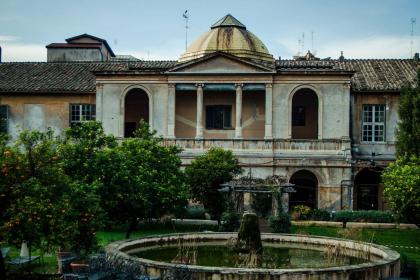
 Condividi
Condividi
Church of the Santissima Trinità dei Pellegrini
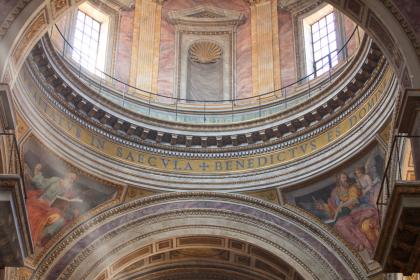
 Condividi
Condividi
Church of San Girolamo della Carità
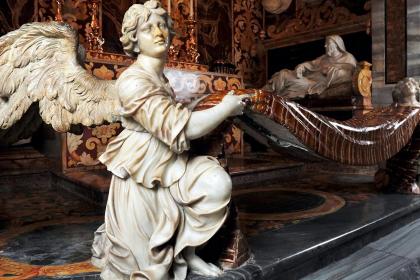
 Condividi
Condividi
Palazzo dei Filippini (Convento and Oratorio dei Filippini)
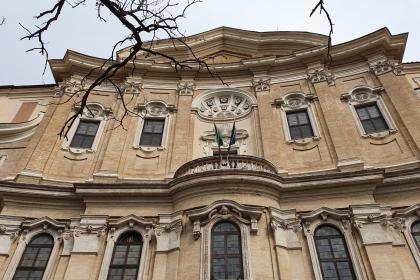
 Condividi
Condividi
The Church of Santa Maria in Vallicella (Chiesa Nuova) and the rooms of San Filippo Neri
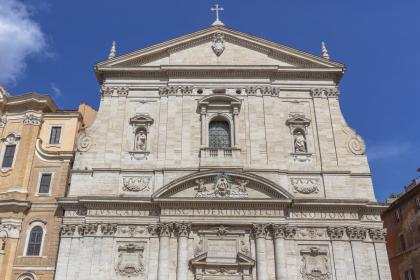
 Condividi
Condividi
Massimo alle Colonne Palace (Chapel of San Filippo Neri)
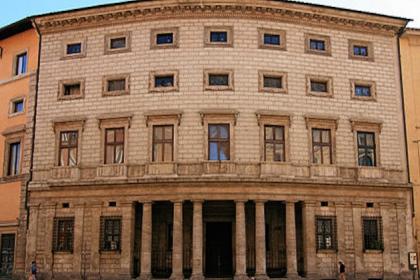
 Condividi
Condividi
The Church of San Giuseppe dei Falegnami
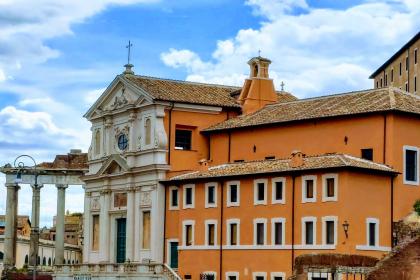
 Condividi
Condividi
Bignè di San Giuseppe

Mamertine prison (Carcer Tullianum)
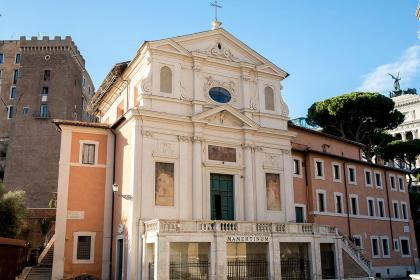
 Condividi
Condividi
Seven Roman guild churches
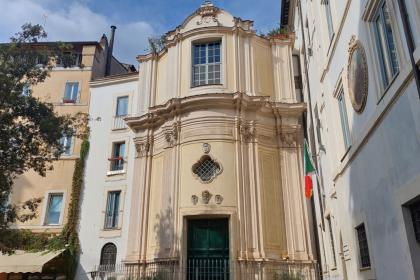
Rediscovering ancient arts and craft, stories and traditions with the guild churches
Museo Storico della Liberazione di Via Tasso
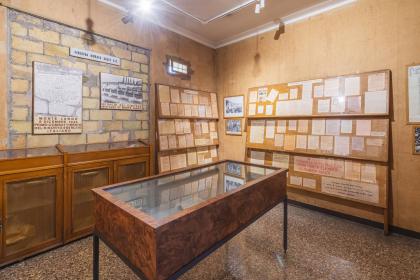
 Condividi
Condividi
Mausoleum of The Ardeatine Caves
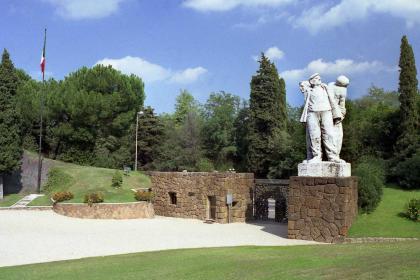
 Condividi
Condividi
Piazza della Minerva
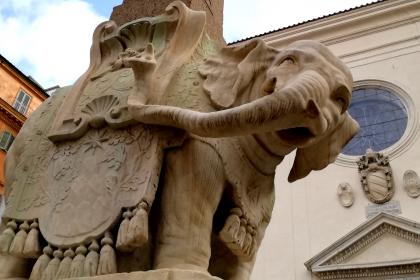
 Condividi
Condividi
The Basilica of Santa Maria sopra Minerva
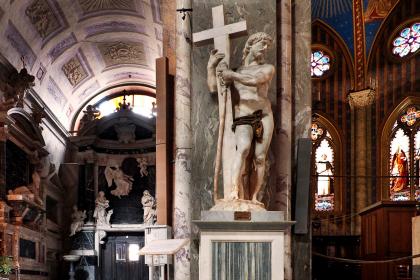
 Condividi
Condividi











































